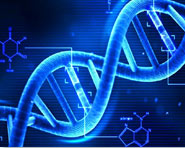


 النبات
النبات
 الحيوان
الحيوان
 الأحياء المجهرية
الأحياء المجهرية
 علم الأمراض
علم الأمراض
 التقانة الإحيائية
التقانة الإحيائية
 التقنية الحيوية المكروبية
التقنية الحيوية المكروبية
 التقنية الحياتية النانوية
التقنية الحياتية النانوية
 علم الأجنة
علم الأجنة
 الأحياء الجزيئي
الأحياء الجزيئي
 علم وظائف الأعضاء
علم وظائف الأعضاء
 الغدد
الغدد
 المضادات الحيوية
المضادات الحيوية|
أقرأ أيضاً
التاريخ: 11-9-2018
التاريخ: 1-7-2018
التاريخ: 2024-12-17
التاريخ: 26-5-2020
|
The common portals of entry for microbes the skin and gastrointestinal, respiratory, and genitourinary tracts contain specialized cells located in the epithelium that capture antigens, transport them to peripheral lymphoid tissues, and display (present) them to lymphocytes. These are the first steps in the development of adaptive immune responses against antigens. This function of antigen capture and presentation is best understood for dendritic cells, the most specialized antigen-presenting cells (APCs) in the immune system. Dendritic cells capture protein antigens of microbes that cross epithelial barriers and transport these antigens to regional lymph nodes, where they display fragments of the proteins for recognition by T lymphocytes. If a microbe has invaded through the epithelium, it may be phagocytosed and presented by tissue macrophages. Microbes or their antigens that enter lymphoid organs may be captured by dendritic cells or macrophages that reside in these organs and presented to lymphocytes.
Dendritic cells have another important feature that gives them the ability to stimulate T cell responses. These specialized cells respond to microbes by producing surface proteins, called costimulators, which are required, together with antigen, to activate naive T lymphocytes to proliferate and differentiate into effector cells. Dendritic cells express higher levels of these costimulatory proteins than do other cell types and are thus the most potent stimulators of naive T cells and the most efficient initiators of T cell responses. Other antigen-presenting cells, such as macrophages and B cells, present antigens to differentiated effector T cells in various immune responses.
B lymphocytes may directly recognize the antigens of microbes (either released or on the surface of the microbes), and macrophages and dendritic cells in peripheral lymphoid organs may also capture antigens and display them to B cells. A distinct type of cell called the follicular dendritic cell (FDC) resides in the germinal centers of lymphoid follicles in the peripheral lymphoid organs and displays antigens that stimulate the differentiation of B cells in the follicles. FDCs do not present antigens to T cells and differ from the dendritic cells described earlier that function as APCs for T lymphocytes.



|
|
|
|
للتخلص من الإمساك.. فاكهة واحدة لها مفعول سحري
|
|
|
|
|
|
|
العلماء ينجحون لأول مرة في إنشاء حبل شوكي بشري وظيفي في المختبر
|
|
|
|
|
|
|
الهيأة العليا لإحياء التراث تقيم ندوة علمية عن علم النحو في النجف الأشرف
|
|
|